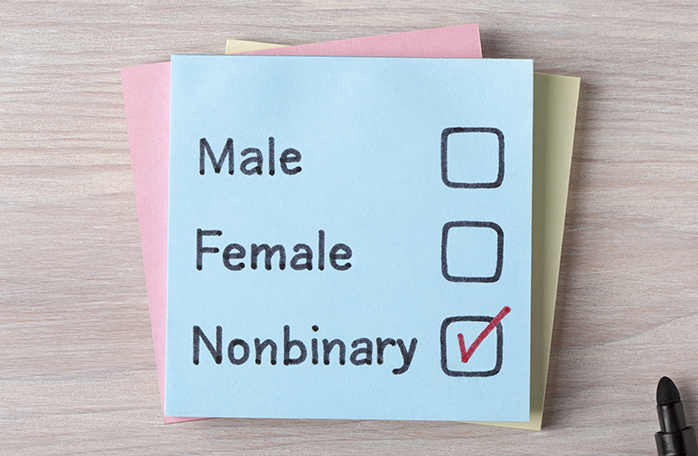It seems we are living in an age where 1960’s racial and gender reporting requirements are archaic. More workers are not identifying themselves by race/ethnicity and/or gender when applying for positions or when onboarding. 
This situation creates a tension, especially for those employers who have to file government forms such as the EEO-1 report or affirmative action plans (AAPs). These reports do not have “unknown” as a category (except for applicant flow for AAPs). Employers often wonder how to report since the employee is not required to complete any self-identification forms. Therefore, employers have to walk a line to do visual IDs.
California is more progressive for state reporting purposes. In 2017 California passed a law to recognize a third gender option on state-issued IDs, driver’s licenses, and birth certificates. The new law also makes it easier for California residents to change their legal gender to male, female, or nonbinary. Yet, employers still have to report on traditional gender categories for EEO-1 and other federal demographic reporting. Oregon, Vermont, Washington, and Washington DC also allow for non-binary reporting.
What is non-binary? According to the National Center for Transgender, non-binary is defined as "people whose gender is not exclusively male or female, including those who identify with a gender other than male or female, as more than one gender, or as no gender, identifying as a combination of genders or not identifying with either gender at all."
A recent Pew Research study found that a majority of Americans (57%) say the fact that the U.S. population is made up of people of many different races and ethnicities is a very good thing for the country, and another 20% say this is somewhat good. Furthermore, more than six-in-ten Americans (64%) say the fact that the U.S. population is made up of people of many different races and ethnicities has a positive impact on the country’s culture.
When it comes to the workplace three-quarters of Americans say it is very (49%) or somewhat (26%) important for companies and organizations to promote racial and ethnic diversity in their workplace. Yet, most are not interacting much with those of other races or ethnicities. Most surveyed have at least some daily interaction with people who do not share their race or ethnicity, but relatively few say they have a lot of interaction. This is particularly the case for whites interacting with racial or ethnic minorities and nonwhites interacting with minority groups other than their own.
However, only about one-in-four (24%) say that, in addition to their qualifications, a person’s race and ethnicity should be considered in decisions about hiring and promotions in order to increase diversity. A majority (74%) says employers should only take a person’s qualifications into account when making employment decisions, even if it results in less diversity in the workplace. The view that employers should only take a person’s qualifications into account is widespread among whites (78%) and Hispanics (69%); about half of African Americans (54%) share this view.
Yet, if non labels explode, will employers be between a rock and a hard place to promote diversity and harmonious workplaces? Diversity programs today need labels to succeed. It seems incongruous that a society thinks that diversity is important, yet employers cannot identify diversity except through personal filters of those working in D&I or HR. In a perfect world, gender and ethnicity/race should not matter, but studies on African American and Latino named applicants show that biases impact hiring decisions. Further studies on performance have shown that African American ratings may have statistical significance regardless of the ethnicity/race and/or gender of the supervisor. With more pressure from politicos and society for employers to solve societal ills within their domains, e.g. solving for the issue of how motherhood impacts pay disparity, employers need to be innovative in their approach to workforce planning and development and push politicos to recognize the consequences of the new age of no labels.
Sources: Pew Research Center 5/8/19, USAToday 6/21/17